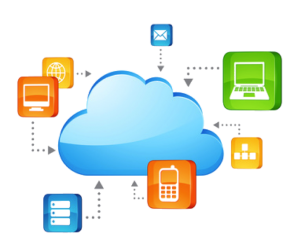 Since its inception and wide acceptance in the IT circles, cloud computing is now a part of the business vernacular. Cloud computing can be used by line of business managers and their employees to access the data whenever they need it, applications and features to do their jobs more efficiently and more effectively.
Since its inception and wide acceptance in the IT circles, cloud computing is now a part of the business vernacular. Cloud computing can be used by line of business managers and their employees to access the data whenever they need it, applications and features to do their jobs more efficiently and more effectively.
This article will examine how important it is for business managers to use software-as-a-service model. Software vendors have been targeting IT professionals for a number of reasons. They have been sending messages discussing the advantages of cloud computing in its various forms. Some of these messages were targeted at accountants or number crunchers about how operating expenses compared to capital expenditures. Other messages targeted the IT community about scalability, on-demand storage capacity and the cloud’s ability to take over the mundane task of infrastructure management and allows the IT professionals on more important task to handle.
Though these messages were true they did not concentrate or focus on the point why business applications delivered in the cloud via SaaS model, but are also the key for bridging the innovation gap, executives often complain about to their IT organizations.
#1. Adoption of cloud computing is fast and easy
Many a times employees on the business side and the IT side need to work together to ensure that the business application selection and deployment becomes easy. So the task requires a lot of questions to be answered to ensure seamless migration of data occurs without affecting the day to day business activities. Then there are questions that must be answered from the IT side about the smooth transition of data and the application without a long downtime.
Information and data silos do not exist in today’s fast moving global economy. Since most of this heavy lifting job is done at the end of the SaaS provider, such long overheads can be avoided and the business can continue just as usual days without any downtime.
More and more organizations have accepted the robust technology offered by SaaS. Constellation Research found that the budget allotments for IT development dropped by five percent as compared to the previous year. During the same time period cloud computing technology spending grew by approximately 20 percent.
#2. You Can Connect From Anywhere
Cloud Computing’s benefits actually boil down to the system’s flexibility. By flexibility we mean that you don’t need to keep your business applications placed on your office computers only and shackle your employees to their desks. SaaS apps can connect far-flung team members, employees can work from their home, the corner coffee shops- it can connect people and let them work from anywhere. All that is required is a real-time connection over the internet that makes it easier to communicate with clients.
#3. On-Demand Capacity
The SaaS technology has made not only made the capacity on the servers to be bought flexibly but also let’s the money be flexible in the hands of business owners. A Business owner does not needs to spend on the server capacity that he might need in the next two years. He can spend money on buying sufficient amount of server capacity and let the employees work on it seamlessly. That keeps the money liquid- and buying of server capacity becomes crucial only when it is critically required.
This strategy is specially very successful for startups as the money is a constraint for most of the startups. Groupon utilized this strategy, which allowed it to become a worldwide recognized coupon brand.
#4. Build a customized workflow environment
Sometimes enterprise applications instead of being helpful could be a frustrating affair if all the components don’t work well in your startup environment. For example, if you are scared of using SaaS for sensitive data, you can choose an on-site server for your financial jobs and let applications on SaaS handle team collaborations. Using SaaS, startups can customize their workflow and streamline their operations.
#5. Stay updated with technology
SaaS programs are constantly evolving, innovating and help startups streamline their operations and there’s no better example than Slack’s assault on email. The communication platform works seamlessly across devices and has replaced the internal email communication among the employee hierarchy.
Putting SaaS into Action
With thousands of cloud service providers currently operating in the market, you should not jump into making a decision to buy service from just anyone. Diagnose your business needs and then conclude the decision making with the help of an Information technology provider for a suggestion that suits your SaaS business solution.
Flexibility would be your best defense in the volatile startup landscape. Armed with SaaS solution, your startup will be equipped to hit the ground running.
